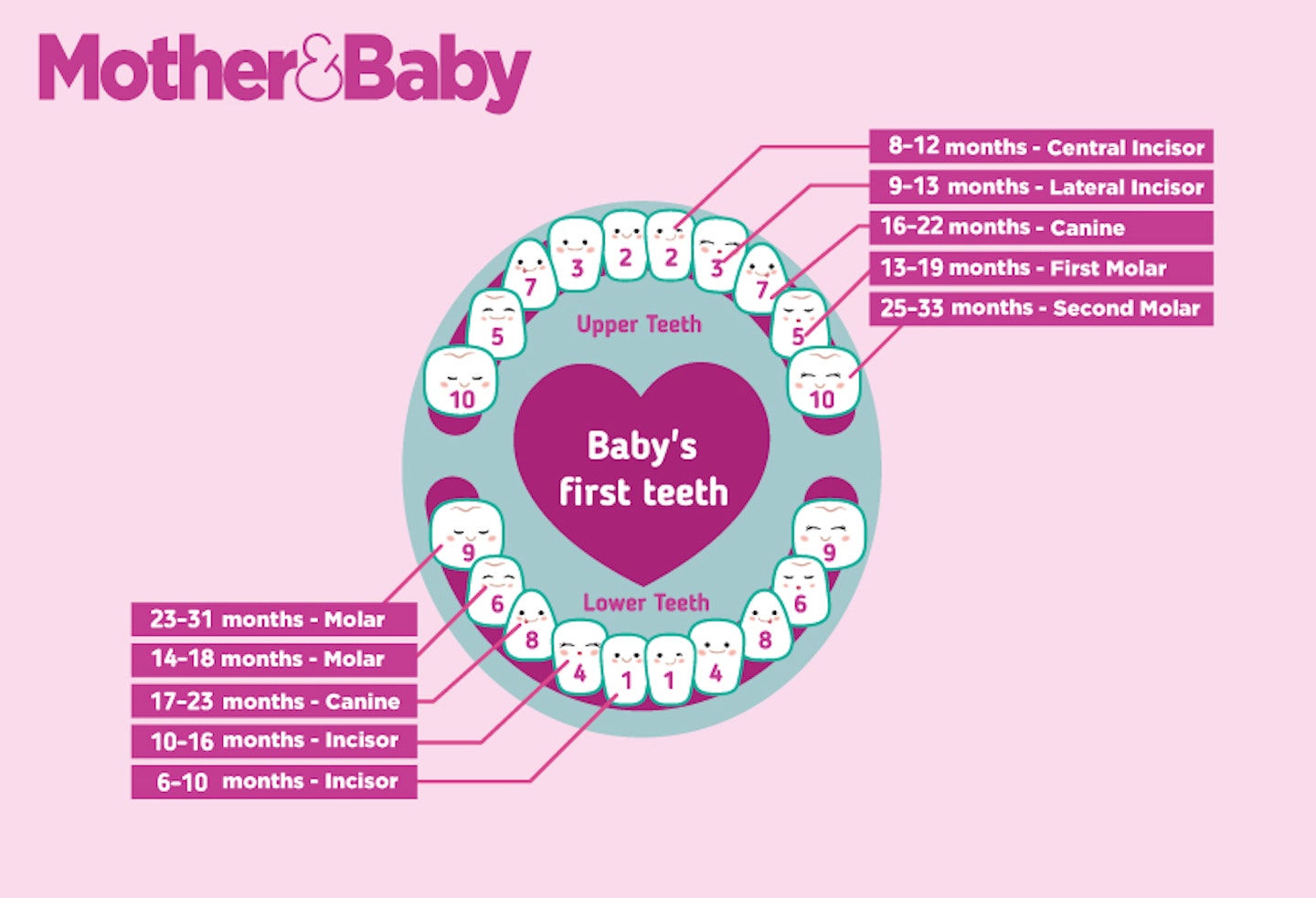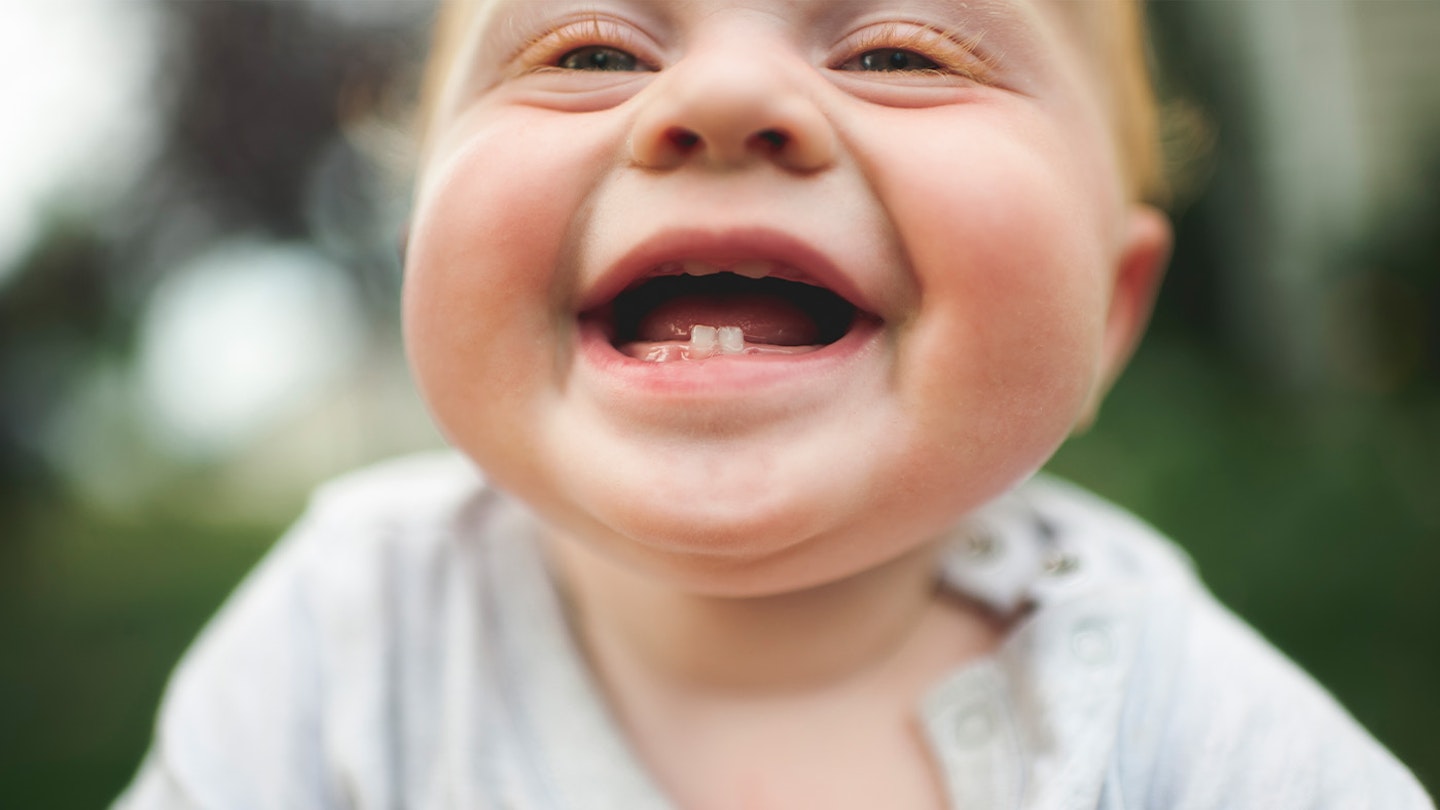The growth of your baby's teeth is an exciting time in their baby development milestones, although the teething cries may not mean it feels like it.
By the time your baby is three, they'll probably have 20 teeth, which is pretty amazing. They'll get most of their "baby teeth" during toddlerhood, starting from around four to six months old when teething starts.
Your baby is born with "buds" on their gums, and it's in these areas that the 20 teeth will "erupt" and form into proper baby teeth. It's usually pretty straightforward, but sometimes the tooth-growing process doesn't always go to plan.
Sometimes, teeth might grow in the wrong order, or develop too close together. There could also be a delay in tooth-growth that might prompt a trip to your GP.
What order should my baby's teeth grow in?
There are five different kinds of teeth that your baby will grow in their first two years. They are:
• Central incisors (front teeth)
• Lateral incisors (between the front teeth and canines)
• First molars
• Canines (next to the first molars)
• Second molars (back teeth)
Baby teeth order chart
Babies usually get their front teeth first, but sometimes they come slightly out of order. This isn't usually a cause for concern, but here's a rough guide of which teeth should come in and when, so you know how long teething will last:

Although your baby's teeth growth might be different, experts say there is a general pattern. Paediatric dentist Claire Stevens says, "The buds of different teeth grow at different rates.
"First to emerge, when your baby is around six months old, will be their bottom two front teeth. This is followed a month or so later by the upper middle teeth, the central incisors.
"At nine to 12 months, they’ll get four more. One on either side of these central teeth, and these are the lateral incisors.' These usually emerge in pairs, two on one side, then two on the other.
"At around 14 months, the first molars – bigger, with a flat surface to crush food – will appear top and bottom," explains Claire.
"This leaves a gap between them and the incisors. At 18 months, four sharper canine teeth fill this gap top and the bottom: these are used to tear food.
"At around 26 months, two pairs of second molars will emerge at the back of the mouth, with broad flat surfaces to grind up food."
You can start brushing your baby’s teeth as soon as their first primary tooth comes through their gums, which will normally be the lower front two teeth at around six to 10 months.
When is it normal for my baby to teethe?
Every baby is different. Some may start teething at four to seven months and some may not get their first teeth until they're around one. Sometimes babies are even born with one or two teeth – it's largely down to genetics.
What if my baby's teeth are coming in the wrong order?
The order in which your baby's teeth arrive is actually less important than other factors, like the spacing between them and disease prevention.
Because baby teeth are much smaller than adult teeth, there should be plenty of space between them to allow room for the adult teeth to grow.
Ideally you should check your baby's teeth every four months and visit a paediatric dentist or your GP if you're worried that your baby's teeth are growing too close together.
You might be surprised to know that baby teeth are at a higher risk of tooth decay, causing an increased risk of:
• Early tooth loss
• Infections
• Gum disease
• Yellow or brown spots on teeth
• Feeding difficulties
• Cavities
• Poor self-esteem
Teething problems tend to happen more frequently in babies born prematurely, so if your baby was born pre-term, consider keeping a closer eye on their teeth. If no teeth have appeared by the time your baby is 18 months old, take them to see a dentist.
About the expert
Claire Stevens is a paediatric dentist and media spokesperson for and Past President of the British Society of Paediatric Dentistry, an organisation which aims to improve oral health in children and encourages the highest standards of clinical care. Claire was appointed CBE in the 2019 New Year’s Honours List for Services to Children.
